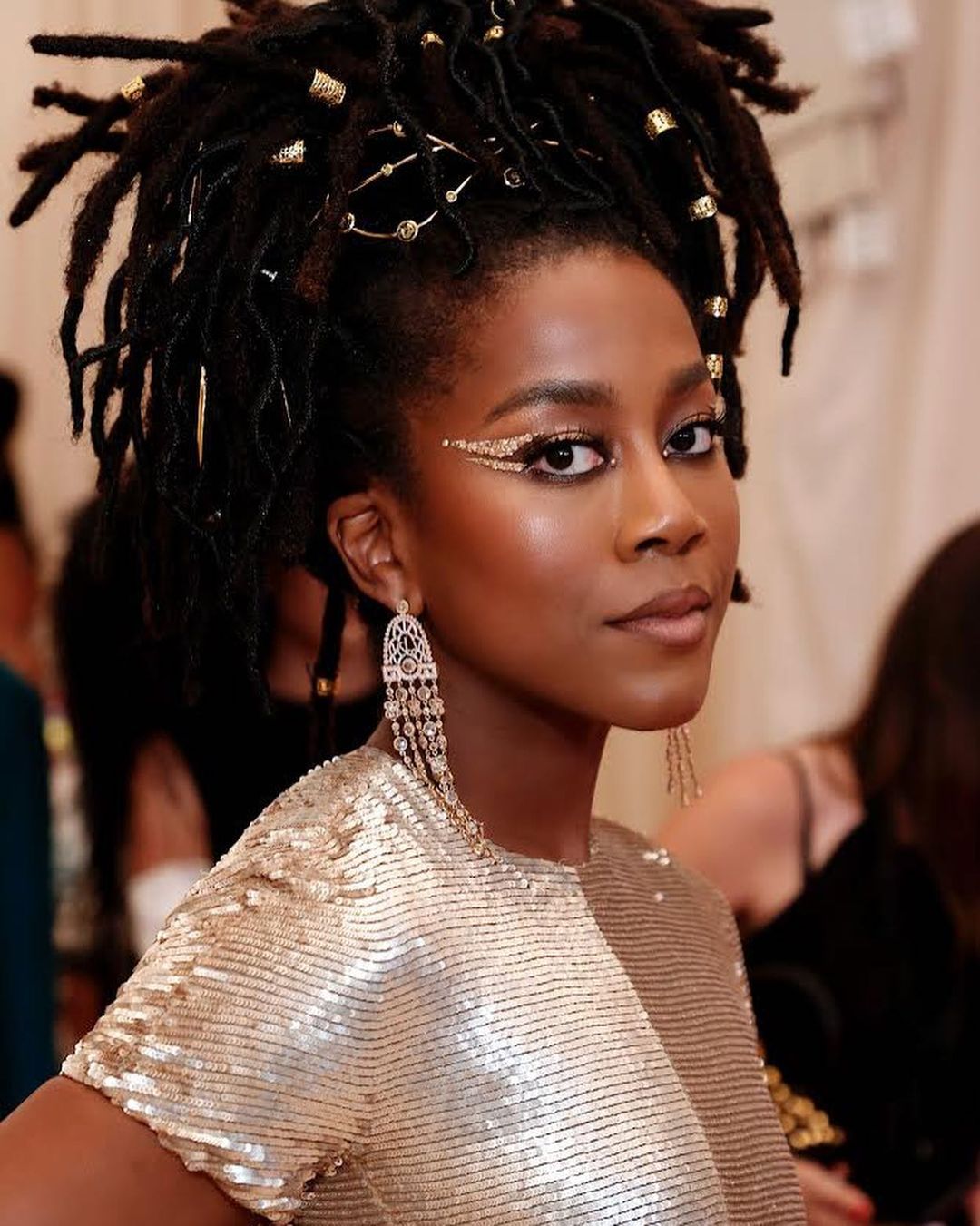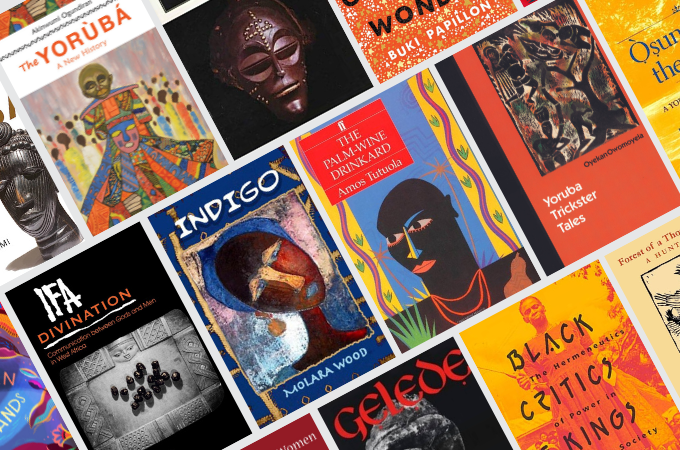March Selection

Author
#1 NEW YORK TIMES BESTSELLER
HUGO & NEBULA AWARD WINNING
Named one of TIME magazine’s 100 Most Influential People, Tomi Adeyemi is a Hugo- and Nebula Award–winning Nigerian American writer and storyteller based in New York, New York. After graduating from Harvard University with an honors degree in English literature, she studied West African mythology, religion, and culture in Salvador, Brazil. Her first novel, Children of Blood and Bone, debuted at #1 on the New York Times bestseller list. Its highly anticipated sequel, Children of Virtue and Vengeance, also debuted at #1 on the New York Times bestseller list. Tomi’s Legacy of Orïsha trilogy is being developed into a feature film. Tomi can be found teaching creative writing online. In 2020, she was named one of Forbes’s 30 Under 30 in Media, and her website was named one of the 101 Best Websites for writers by Writer’s Digest.
Reviews
"Children Of Blood And Bone Tackles Heavy Themes In A Magical World"
It's a big, heavy book that tackles big, heavy themes - police killings of unarmed black men, the politics of black hair, even death. It's also a young adult fantasy book with magic and gods.
Tomi Adeyemi's highly anticipated debut novel, Children Of Blood And Bone, is a high fantasy rooted in reality — from African mythology to Black Lives Matter protests.
Powerful, captivating, and raw—Adeyemi is a talent to watch. Exceptional.
"Seventeen-year-old Zélie and companions journey to a mythic island seeking a chance to bring back magic to the land of Orïsha, in a fantasy world infused with the textures of West Africa.
Dark-skinned Zélie is a divîner—someone with latent magical abilities indicated by the distinctive white hair that sets them apart from their countrymen. She saves Princess Amari, who is on the run from her father, King Saran, after stealing the scroll that can transform divîners into magic-wielding maji, and the two flee along with Zélie’s brother. The scroll vanished 11 years ago during the king’s maji genocide, and Prince Inan, Amari’s brother, is sent in hot pursuit. When the trio learns that the impending solstice offers the only chance of restoring magic through a connection to Nana Baruku, the maternal creator deity, they race against time—and Inan—to obtain the final artifact needed for their ritual. Over the course of the book allegiances shift and characters grow, change, and confront traumas culminating in a cliffhanger ending that will leave readers anxiously awaiting the next installment. Well-drawn characters, an intense plot, and deft writing make this a strong story. That it is also a timely study on race, colorism, power, and injustice makes it great."
Yoruba- West African Folklore & Afrofuturism & Africanfuturism
Click image below to find more recommendations for further reading.
What is Afrofuturism?
Afrofuturism expresses notions of Black identity, agency and freedom through art, creative works and activism that envision liberated futures for Black life.
Using more than 100 objects from music, film, television, comic books, fashion, theater, literature and more, our museum's latest exhibition covers more than a century of Afrofuturism’s rich history of expression and investigates its impact and broad influence on American culture.
From the National Museum of African American History & Culture
Afrofuturism: A History of Black Futures.
Expanding Perspectives on Africa and Diaspora
"Not many can assess its representation of African Yoruba Orisha culture, history, diaspora and modernity. Thus, since I am a scholar, children’s book author, and priest of the Orisha (Yoruba and Africa), it’s fair that I chime in. My own questions about this book upon its March 2018 launch were: 1. How does it represent Africa and the African Diaspora? 2. How does it represent the Orisha (Orisa) and Yoruba? 3. Is this book appropriate for my elementary school-aged children and/or their library?
Adeyemi’s work has flow, excitement, and notable motives. She skillfully weaves in aspects of African historical and modern politics, culture, and spirituality. The main character Zelie, and her diviner class have been persecuted, most violently by the tyrant King Saran. He kills the maji class (adult diviners) including Zelie’s mother. The teens go on a quest to return magic so diviners can become maji and discover their own ashe. The story, in part, explores the meaning, responsibility and controversies of having ashe (an authentic Yoruba concept)."
Reviewed by: Jaye Winmilawe, Ph.D.
Published in Africa Access Review (November 8, 2018)
Click the image below to read more.
Screen Adaptation
Tomi Adeyemi’s Book “Children Of Blood And Bone” is Heading to the Big Screen
This big-screen live-action will be produced by Paramount Pictures in collaboration with Marty Bowen of Temple Hill Entertainment, Karen Rosenfelt of Sunswept Entertainment, and Wyck Godfrey.

Who are the Orisha?
Gods of the Yoruba
"In recent years we have seen a very welcome uptick in the number of fantasy books inspired by West African folklore. The Afrofuturism and Africanfuturism movements have paved the way for Black authors across the diaspora to build worlds and tell stories influenced by their heritage, allowing wider audiences to finally meet the spirits of Yoruba lore."
Summary
CHILDREN OF BLOOD AND BONE
They killed my mother.
They took our magic.
They tried to bury us.
Now we rise.
Zélie Adebola remembers when the soil of Orïsha hummed with magic. Burners ignited flames, Tiders beckoned waves, and Zélie’s Reaper mother summoned forth souls.
But everything changed the night magic disappeared. Under the orders of a ruthless king, maji were killed, leaving Zélie without a mother and her people without hope.
Now Zélie has one chance to bring back magic and strike against the monarchy. With the help of a rogue princess, Zélie must outwit and outrun the crown prince, who is hell-bent on eradicating magic for good.
Danger lurks in Orïsha, where snow leoponaires prowl and vengeful spirits wait in the waters. Yet the greatest danger may be Zélie herself as she struggles to control her powers and her growing feelings for an enemy.
Book Podcasts
Podcasts are a great way to discover new literature and find community interests. Here are some podcasts you might enjoy discussing our March Book Pick, Children of Blood and Bone by Tomi Adeyemi.
"Bring the lemon and sugar, ’cause we got the tea."
THE ISH GIRL SUMMER LIT CLUB
Culture & Identity
Yoruba Culture
Click the link above to read more.
"The Yoruba creation myth traces its roots back to the ancient Yoruba people of West Africa. This lore, deeply entrenched in oral tradition, has been passed down through generations, shaping and being shaped by cultural, social and environmental factors over time."
Click the link above to read more.
"Orisha, any of the deities of the Yoruba people of southwestern Nigeria. They are also venerated by the Edo of southeastern Nigeria; the Ewe of Ghana, Benin, and Togo; and the Fon of Benin (who refer to them as voduns).
The Nigerian scholar J. Omosade Awolalu divided the orishas into three categories: primordial divinities, deified ancestors, and personified natural forces and phenomena. These categories are not rigid, and in some cases they overlap."











